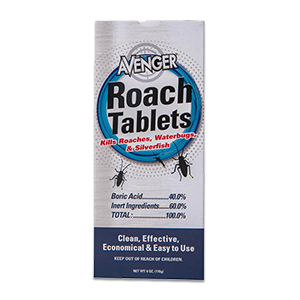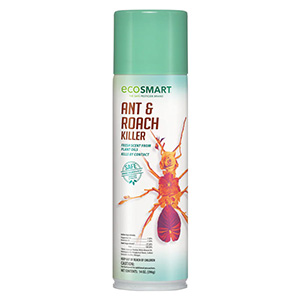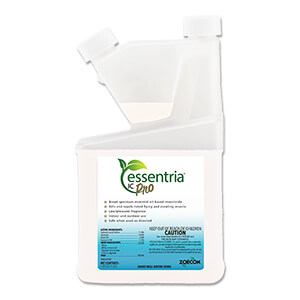Cockroaches
How To Control Cockroaches Indoors & Outdoors
There are several species of cockroaches common in the United States including the German Cockroach, Brownbanded Cockroach, American Cockroach, and Oriental Cockroach. It is important to identify the species present since they inhabit different areas and can contaminate food, utensils, destroy paper, and transmit bacteria and viruses like Salmonella, Staphylococcus, Streptococcus, hepatitis and coliform bacteria to humans.
Species Identification:
German Cockroach - Favors warm, humid environments, especially areas where temperatures are around 70° to 75° F. They generally live hidden in kitchens and bathrooms near plumbing fixtures, in cracks or crevices in cupboards, under drawers and kitchen sinks and similar locations. German Cockroaches often cluster together in areas with favorable conditions, are light brown in color and are about ½ inch long with 2 dark stripes on their upper thorax.
Brownbanded Cockroach - May be widely distributed throughout a building, particularly in high areas, beneath furniture, among books and in other drier areas not normally infested by German Cockroaches. They particularly seek out areas that stay warm most of the time like inside radios or televisions and behind refrigerators. Brownbanded Cockroaches are similar to German Cockroaches in size (1/2" long) but vary in color from light tan to dark brown and have light-colored bands around their bodies and on their wings.
American Cockroach - Inhabits storm drains and from there occasionally enters homes. They are more common in restaurants, grocery stores, bakeries and other sites where food is prepared. They favor very warm, moist environments (temperatures in excess of 82° F), are about 2 inches long and reddish-brown.
Oriental Cockroach - prefers dark, damp places. Many call it a water bug because it is commonly found in sewers, damp basements, cellars and crawl spaces. It may also be found near drains, leaky water pipes and under refrigerators, sinks or washing machines and floors. It prefers temperatures under 84° F, is 1 ¼ inches long and almost black in color. The Oriental cockroach can tolerate cool environments; it has even been found surviving freezing outdoor weather. An Oriental cockroach forages mostly on the first floors of buildings. Occasionally, this pest will thrive in the landscape next to buildings and may enter if a disturbance like a change in the seasons, excess rainfall, or lawn mowing occurs. It can be found outdoors under sewer covers. It feeds on all types of garbage and other organic material. An Oriental cockroach produces a strong smell and is considered one of the worst disease spreaders of all the cockroaches.
Life Cycle:
An adult female cockroach produces an egg capsule containing between 16-50 eggs. The German cockroach carries it around until it is time to hatch; the others carry it a short time and then deposit it to finish incubation. Incubation may be anywhere from 2 weeks to several months. Young cockroaches called nymphs emerge, and gradually grow and molt as they feed. Most live for 1-2 years.
Cockroaches are nocturnal; during the day they hide in dark, warm areas; adults can hide in a crack 1/16 inch wide. At night, cockroaches tend to congregate in corners and travel along edges of walls or other surfaces.
Cockroach Control: Sanitation and Exclusion
- Use traps to monitor for their presence. Place traps in several locations, and move them frequently. Place them where they will enter while foraging. Good locations are behind the stove or refrigerator, and in a cabinet containing food.
- Reduce food, water, and anyplace they can hide. Place all food in sealed containers; repair leaks; seal up cracks.
- Apply Boric Acid to cracks you cannot seal or place boric acid where you know they will walk through it (from the information the traps give you). Boric acid clings to cockroaches, and they will ingest it as they clean themselves. Good-bye, cockroaches…
- Use contact killers, like Orange Guard and EcoPCO AR-X, to spot treat when cockroaches are seen. Sprinkle Diatomaceous Earth, Perma-Guard Crawling Insect Control) where the cockroaches will cross it; they will die in a few days. Baits can be made by mixing boric acid and sugar.
-
-
$10.97
-
-
-
$2.69
-
-
$6.75–$29.99
-
-
-
-
-
-
-
$40.99–$129.99
-
-
$6.79
-
-
-
$31.49–$58.79
-
$5.30–$36.49
-
$11.99–$101.92
























